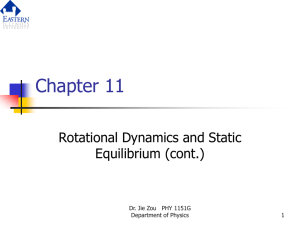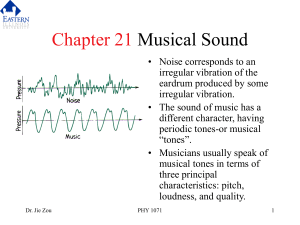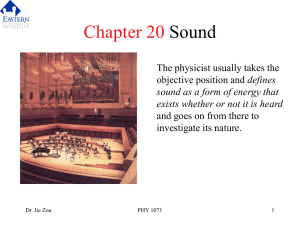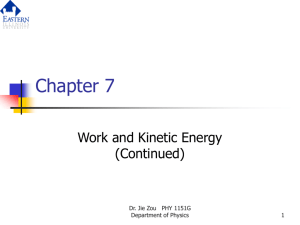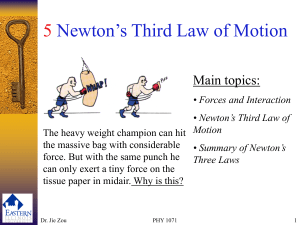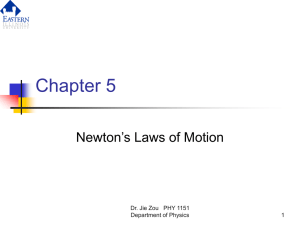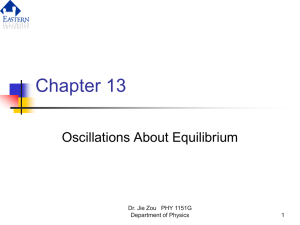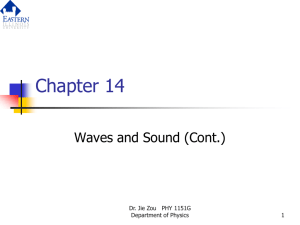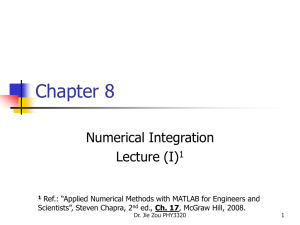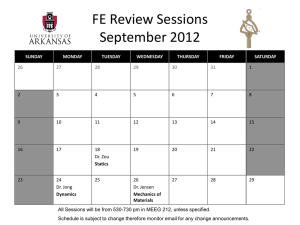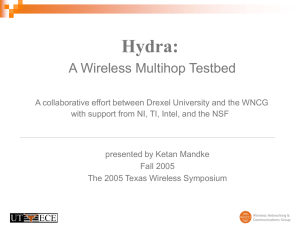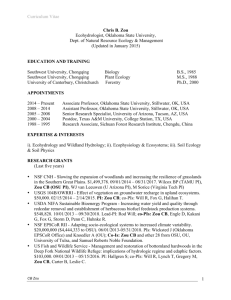Chapter 7
advertisement
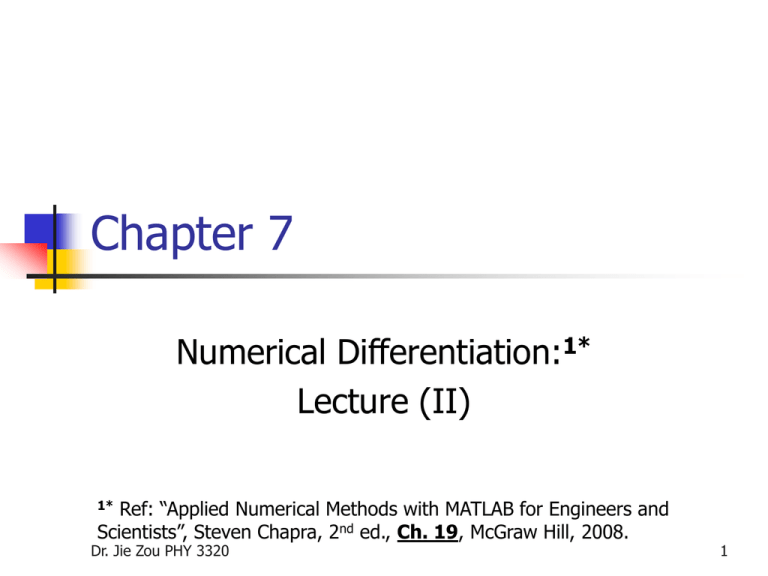
Chapter 7 Numerical Differentiation:1* Lecture (II) Ref: “Applied Numerical Methods with MATLAB for Engineers and Scientists”, Steven Chapra, 2nd ed., Ch. 19, McGraw Hill, 2008. 1* Dr. Jie Zou PHY 3320 1 Outline Numerical differentiation (2) High-accuracy differentiation formulas (3) Derivatives of unequally spaced data Dr. Jie Zou PHY 3320 2 High-accuracy differentiation formulas High-accuracy finite-difference formulas can be generated by including additional terms from the Taylor series expansion. An example: High-accuracy forwarddifference formula for the first derivative (see derivation on the next slide) Dr. Jie Zou PHY 3320 3 Derivation: High-accuracy forwarddifference formula for f’(x) Forward Taylor series expansion f x i 1 f x i f x i h f x i h 2 2! Solve for f’(x) f x i f x i f x i 2 2 f x i 1 f x i h 2 High-accuracy forward-difference formula Dr. Jie Zou PHY 3320 O h f x i f x i 1 f x i h f x i 2! hO h 2 Substitute the forwarddifference approx. of f”(x) f x i 2 4 f x i 1 3 f x i 2h O h 2 Accuracy improved to O(h2) 4 Forward finite-difference formulas Note: Two versions • Upper: Basic • Lower: Highaccuracy Dr. Jie Zou PHY 3320 5 Backward finite-difference formulas Note: Two versions • Upper: Basic • Lower: Highaccuracy Dr. Jie Zou PHY 3320 6 Centered finite-difference formulas Note: Two versions • Upper: Basic • Lower: Highaccuracy Dr. Jie Zou PHY 3320 7 Example f(x) = -0.1x4 – 0.15x3 – 0.5x2 – 0.25x + 1.2 Dr. Jie Zou PHY 3320 Example 19.1 (Ref.): Repeat the computation in Example 4.4 to estimate f’(x) at x = 0.5 with a step size h = 0.25. Employ the high-accuracy formulas for the forward, centered, and backward-difference approximations. 8 Results (Example 19.1) True value: f’(0.5) = -0.9125 HighAccuracy formulas Basic formulas h=0.25 Backward O(h2) Estimate |t| -0.878125 -0.9125 3.77% 0% -0.859375 5.82% h=0.25 Backward O(h) -0.714 21.7% Forward O(h) -1.155 26.5% Estimate |t| Dr. Jie Zou PHY 3320 Centered O(h4) Centered O(h2) -0.934 2.4% Forward O(h2) 9 Derivatives of unequally spaced data Experimental data are often measured at unequal intervals. Previous formulas can be used only for equally spaced data. How to deal with unequally spaced data? One method: (i) Fit a Lagrange Interpolating Polynomial to a set of adjacent points that bracket the point at which the derivative needs to be evaluated; (ii) Differentiate the Interpolating Polynomial analytically and evaluate the derivate at the required point. Dr. Jie Zou PHY 3320 10 Example Example 19.3 (Ref.): As in Fig. 19.6, a temperature gradient can be measured down into the soil. The heat flux at the soil-air interface can be computed with Fourier’s law: qz 0 k Dr. Jie Zou PHY 3320 dT dz z0 where q(x) = heat flux (W/m2), k = coefficient of thermal conductivity for soil [=0.5 W/(m·K)], T = temperature (K), and z = distance measured down from the surface into the soil (m). Note that a positive value of the flux means that heat is transferred from the air to the soil. Use numerical differentiation to evaluate the gradient at the soil-air interface and employ this estimate to determine the heat flux into the ground Answer: f’(0) = -133.333 K/m and q(z = 0) = 66.667 W/m2. 11
